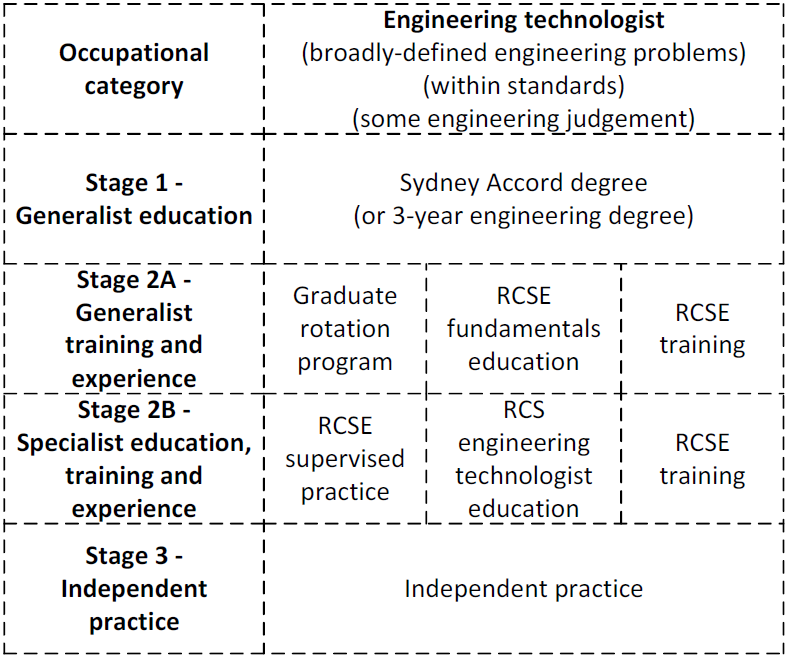The engineering technologist works with broadly-defined engineering problems – i.e. what is defined in a performance-based standard and hence some engineering judgement is required.
Much of signalling design fits into this category – there are existing principles (performance-based standards), and there are multiple well-trodden ways to achieve those principles.
How to develop such a person?
I suggest the following…
Stage 1 – Electrical engineering education
For the same rationale as with professional engineers, going forward this stage will be satisfied by a Sydney Accord degree (or equivalent qualification) in electrical engineering (or related – e.g. mechatronics).
Note that the engineering registration legislation in Queensland, New South Wales and Victoria does not properly recognise engineering technologists. Fixing this is a separate issue.
Stage 2A – Railway control systems engineering experience
I suggest that what is needed is about two years of experience rotating around as many railway control systems engineering areas as possible.
This is as per professional engineers, but within railway control systems engineering only (e.g. not traction and not general telecommunications).
Stage 2A – Railway control systems engineering fundamentals education
I suggest that, during the two-year graduate rotation, there should be a short course that gives the fundamentals (i.e. breadth, not depth) of railway control systems engineering.
Stage 2A – Railway control systems engineering training
This is the same as for professional engineers.
Stage 2B – Railway control systems engineering experience
At the end of the two-year graduate rotation, I suggest that there should then be about three years of working under supervision.
Stage 2B – Railway control systems engineering technologist education
I suggest that there should be an education program that covers railway control systems engineering in depth at the engineering technologist level.
This is much the same as for a professional engineer, but omits the breadth of interfacing systems (although study of the interface itself should be retained) and omits the higher level of judgement (e.g. omit a research project).
Stage 2B – Railway control systems engineering training
This is as per Stage 2A – Railway control systems engineering training.
Stage 3 – Independent practice
Independent practice is actually after the end of initial professional development. However, I include it here to discuss how readiness for independent practice can be demonstrated.
I suggest that, within the (altered) engineering registration schemes, a ‘railway control systems engineering’ area of engineering could be created. Completion of the above allows for independent practice at the level of engineering technologist. This would be independent practice within an engineering technologist’s scope of practice – i.e. only in accordance with a standard (performance-based or prescriptive).
This allows demonstration of competence for broadly-defined engineering problems.
Summary
The recommended initial professional development for an engineering technologist is summarised in Table 5.
